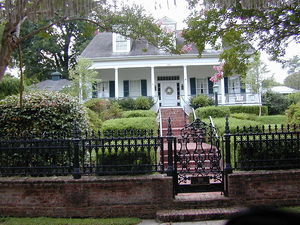Whether you’re a teacher at a public school, or you teach school to your kids at home, there is only so much money in the budget for extra school things. Sure, you have paper and pens, a chalkboard and desks, but there are other things you’ll need to help you teach your kids. A flip chart is one of those things you can make for little money yet will be used again and again as a visual aid teaching method.
There are any number of flip charts you can make for your classroom. Make one that shows fractions, shows show to tell time or even a flip chart which tells a story. The charts are not at all hard to make but are certainly helpful when teaching young kids.
Start with a large piece of thin cardboard to make the stand for the chart. The size of the stand can vary, depending on how long and how tall you want the finished chart to be. Here, we’ll make a flip chart which is 14″ long and 5″ tall. Cut a piece of thin cardboard to be 14″x14″.
Lay the cardboard in front of you. Measure from the edge which faces you to an area which is 5″ up from the edge. Draw a line across that area so that the line is 5″ from the edge, all the way across. Fold on that line and crease well. Turn the cardboard around so that the opposite side is facing you, measure 5″ up, draw a line, and fold on that line. Crease well.
Bring the two edges of the cardboard up together so that you form a triangular shape at each end of the arrangement. The cardboard between the two folds you made will be the bottom of the stand. For now, use a tiny piece of tape to hold the two pieces together, but just at the very ends.
Purchase spiral-bound notebooks which are small and, preferably, have unlined paper. Open one of the notebooks and slide the cover of it between the two cardboard pieces. Set another notebook beside that one, sliding its cover into the slit as well. When the notebooks are in place tape the two cardboard pieces together, between the notebooks.
Write or draw on the notepads, use stickers or paper cutouts, and make the flip charts you want. For example, on one tablet, write the numbers “1” thru “20” – not in order – with one number on each page. On the opposite tablet, make one image on one page, two images on another page, three images on another page, and so forth, as you work your way up to 20 images on a page. Kids can flip the number tablet to any number, then flip through the opposite table to find the correct amount of images for that number.
There are many different flip charts you can make by using this simple technique for building the cardboard stand. You’ll find spiral-bound notebooks in many sizes and colors when you shop online or locally at an office supply store.


